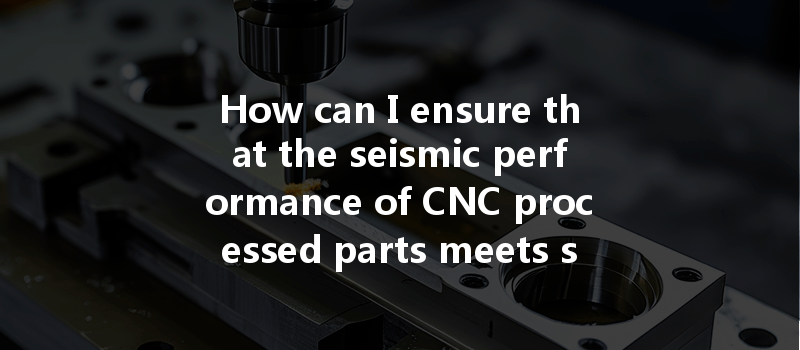Opening:
Did you know that approximately 60% of the world’s population lives in regions highly susceptible to earthquakes? This statistic illustrates the critical need for durable engineering solutions capable of withstanding seismic forces. As structures evolve to become more complex, especially with the rise of Computer Numerical Control (CNC) machining, ensuring that CNC processed parts maintain a high-performance standard during seismic events has become increasingly important. So, how can we ensure that these parts meet specific seismic performance conditions?
:
When it comes to the safety and reliability of structures in seismically active areas, the role of CNC processed parts cannot be understated. These components, which can range from structural supports to intricate brackets, must endure the powerful forces generated during an earthquake. Thus, as design engineers and manufacturers engage with CNC machining technology, they must consider the unique specifications that govern seismic performance.
Understanding Seismic Performance Requirements:
Before embarking on the journey to ensure CNC processed parts meet seismic performance standards, it is essential first to understand what seismic performance entails. Seismic performance refers to how a material or structure behaves when subjected to earthquake-induced forces. Key factors influencing seismic performance include:
The Solution Framework:
Choosing the Right Materials:
Selecting materials is the first and most crucial step in ensuring seismic performance. While steel and concrete are traditional choices, advances in composite materials have emerged, contributing to enhanced performance and reduced weight.
Common Materials Used:
Simulation and Modeling:
To ensure that CNC processed parts will perform adequately under seismic loads, simulation tools are employed. By using Finite Element Analysis (FEA), engineers can predict the behavior of materials under stress before producing the parts.
Iterative Design:

The design process should be iterative, incorporating feedback from simulations. This involves refining shapes, optimizing structural members, and integrating redundancy where possible.
Precision Engineering Techniques:
Precision is key when creating CNC machined parts meant for seismic applications. Utilize methods such as:
Prototyping and Testing:
Once parts reach fabrication, rigorous testing must follow to validate the design and material choice.
Integrating Codes and Standards:
Be aware of local building codes and industry standards pertinent to seismic design. Throughout history, codes have evolved, reflecting lessons learned from previous seismic events. Compliance with these standards not only assures quality but also helps reduce liabilities.
Feedback Loops:
Integrating customer and field feedback can result in valuable lessons leading to continuous improvement. Each project should incorporate a learning cycle to drive better performance in future designs and applications.
Monitoring Performance:
If practical, consider implementing monitoring solutions in built structures that use CNC processed parts.
:
In summary, ensuring the seismic performance of CNC processed parts involves a complex yet manageable framework. This includes rigorous material selection, careful structural analysis and design, meticulous quality control, thorough testing, adherence to regulations, and a focus on continuous improvement.
As the world grapples with the realities of living in seismically active regions, the importance of high-quality CNC machined parts cannot be overstated. By placing emphasis on these practices, manufacturers and engineers can contribute to safer structures that perform reliably during seismic events.
Building a better future means contemplating these integral aspects of physics, material science, and engineering processes. Incorporating these principles doesn’t merely enhance component quality; it also strengthens communities’ resilience in the face of natural disasters.
Now, as you reflect on the information presented here, consider how you can apply these practices in your future projects. It’s not just about creating parts; it’s about engineering safety and reliability for a sustainable future.






